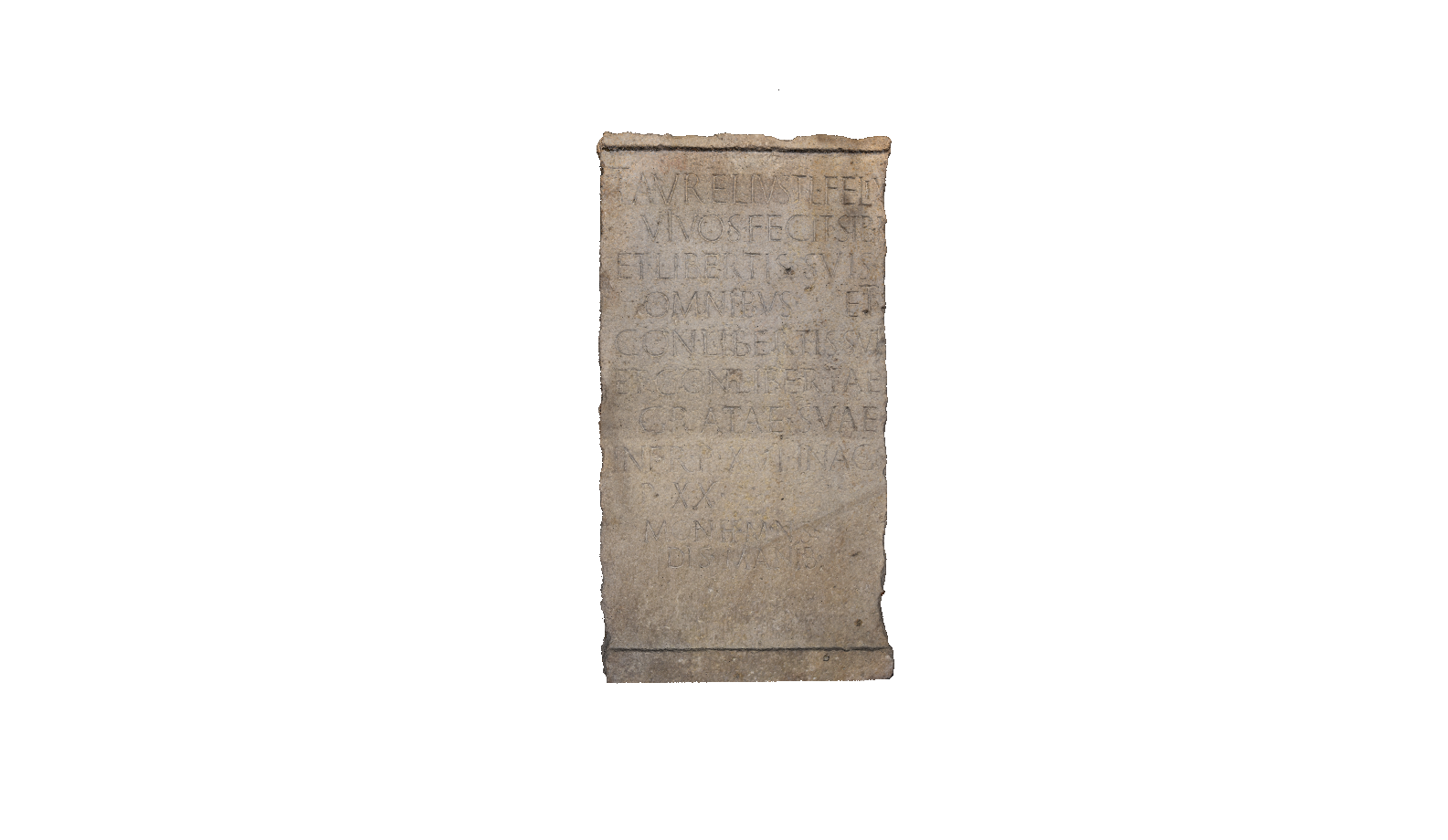Description
Click on the image to go full screen
This monument, found in Este (Padua) and made of trachyte, was originally a plinth used to support a now missing part, possibly a statue. On the front face there is a long inscription that, due to its graphic characteristics, has allowed the block to be dated to the 1st century AD.
The titulus recalls Titus Aurelius Felix, a freedman (freed slave), as the commissioner of this monument, intended for himself, his freedmen and conliberts, his fellow slaves before they were freed ("fecit sibi/ et libertis suis/ omnibus et/ conlibertis suis"), including Grata, a conliberta to whom Titus is particularly attached. This was followed by the measurements of the tomb and the formula to guarantee the exclusion of the tomb from the inheritance: “the monument will not follow my heirs” which means that the monument cannot be violated or tampered with by the heirs.
The particularity of this piece is in the social information it provides: a freedman, a ex-slave, once he had attained a certain economic affluence could not only commission such a work (certainly of considerable prestige), but also own freedmen himself and guarantee them protection in the afterlife through a monument commemorating them all.

